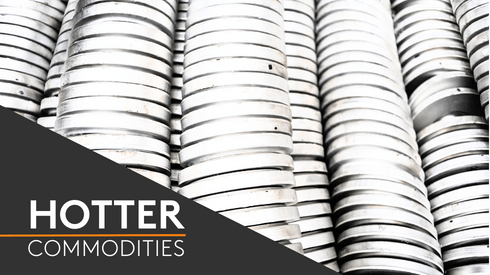In July 2023, China announced export controls on gallium and germanium — two metals with critical uses in internet infrastructure and the wider technology industry — sending shockwaves through markets for those metals outside of the country.China accounts for the vast majority of the world’s production of both metals, and concerns about their disrupted supply sparked renewed debate about the supply of critical minerals to the US and other Western countries, whose own production of the metals has atrophied while China’s has blossomed.
At the time, Fastmarkets asked market participants whether the export curbs were a political symbol or a real threat. The timing of the announcement — shortly after the US had announced fresh export restrictions on advanced chipmaking to China — led some market participants to suggest the move was part of a technology and trade war tit-for-tat.
A year and half later, the same question persists.
China announced on Tuesday December 3 that it was tightening its existing export controls on gallium and germanium (and antimony and graphite, which were covered in subsequent export controls), explicitly prohibiting shipments of both metals to the US.
The decision raised new concerns in the market and the media due to the criticality of these metals across a variety of high-tech and particularly chipmaking sectors. The United States Geological Survey report published in November estimated that a total ban of exports of gallium and germanium from China could cost the US economy about $3.4 billion in economic output.
Again, the timing of the new announcement — the day after the US announced a new wave of restrictions targeting China’s chipmaking sector — raised concerns among market participants about geopolitical posturing.
And the fact that direct exports of gallium and germanium from China have de-facto been blocked to the US since the export control first came into effect also raised questions. China’s customs data shows no exports of either metal to the US since the control was implemented.
This has led some market participants to believe that there will be little difference under the new tightened regime, Fastmarkets heard.
“Technically speaking, nothing should change… [China] just officialized something that they were already doing,” a European trader said.
Indeed, the impact on gallium and germanium prices in European markets was limited following Tuesday’s announcement.
Fastmarkets’ assessment of gallium 99.99% Ga min, in-whs Rotterdam was $470-550 per kg on December 6, flat on the session before and since November 8.
But gallium market participants in Europe faced difficulty in finding offers, with stockholders saying they were staying on the sidelines to assess the effects of a tighter implementation of China’s export controls.
Fastmarkets’ price for germanium 99.999% Ge, in-whs Rotterdam was $2,900-3,000 per kg on December 6, narrowing up by $50 per kg from $2,850-3,000 per kg in the previous session on December 4.
Germanium supply in Europe has been tight for some time, however, and that price increase was not related to panic in the market, but to a continuation of the tightness, sources told Fastmarkets.
Closing loopholes
Although market participants said that an effective prohibition on exporting material to the US was already in place, some questioned whether the new announcement may be targeting indirect exports of Chinese material into the US.
The latest announcement warned that violations of the measure would lead to legal consequences, particularly for parties transferring or providing these items to US entities without authorization.
Data from the United States International Trade Commission (USITC) shows the country has been importing some gallium and germanium of Chinese origin.
The US has imported some 1.1 tonnes of China-origin gallium and 4.5 tonnes of China-origin germanium since the export control first came into effect last year, according to the data, which is available up to October of this year.
Per the US Census Department, the country of origin refers to where the goods were produced or where they underwent a tariff classification change indicating a “substantial transformation.”
The data therefore does not necessarily reflect that the US is somehow indirectly importing material from China; instead, it could be buying material from pre-export-control stocks in Europe and elsewhere, when exports from China did not require end-user documentation.
Either way, the initial implementation of China’s export control required foreign buyers to identify their material’s end-user before receiving a license to ship material, before exports were considered on a case-by-case basis. The end-user classification is understood to refer to someone transforming material to a sufficient extent to change its relevant customs code.
That classification would likely make any entity exporting gallium or germanium recycling feedstock from China and refining that into metal as an end user, even if they are then shipping that metal to the US, market participants told Fastmarkets.
But they questioned how practical enforcing an export control lower down the value chain could be, while warning it could lead midstream gallium and germanium consumers exercise more caution in their sales into the US if they are sourcing metal from China.
“Are you going to risk your China sourcing ability for a small US sale?” a second European trader said.
China-based exporters said it was too early to say how the tighter export controls would affect shipments in the long run, although they warned of longer processing times for exports to be approved due to extra due diligence requirements.
Some market participants have reported that processing times for exports have been longer anyway. Exports of gallium were initially frozen when the export control came into effect, but, since then, shipments have been to close to their historic volumes.
Furthermore, in October, the most recent month for which China’s trade flow data is available, gallium exports declined precipitously, leading some sources to ponder that tighter due diligence requirements were already being placed on shipments.
Want to find out more about our critical minerals price data, forecasts and market insights? Visit our dedicated critical minerals market hub here.






